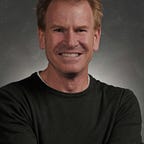In New Zealand, a day at the park
In scattered moments New Zealand presents itself as a time warp, hurtling you back a solid couple of decades.
At The Crab Shack in Wellington where they serve surprisingly good crab cakes on thin wooden boards (surprising considering the name and the waterfront locale), the Bee Gees and Abba and David Bowie in the misguided “Golden Years” period gyrate and lip-synch on the big screen, wide-eyed and happy as if they’re tickled to be paraded out on MTV for the first time.
The keenest throwback of all, though, happens here:
This is Kowhai Park in Whanganui, up the coast from Wellington on the North Island, the little town we will call home for the next 12 months.
Kowhai Park is a dream of a playground, if you’re a kid. A giant yellow octopus springs from the ground, tentacles looping majestically in and out of the grass. Nearby, a whale’s mouth opens wide, inviting you in to pounce around on its blood-red tongue, Jonah-like, and pretend to have been swallowed. There’s a treehouse over yonder, very Swiss Family Robinson, sturdy wooden boards with heavy chains lashing things together, and near the parking lot, a tall, purple stegosaurus whose steeply declining back does double-duty as a slide that hurtles little Kiwis downward by dint of a geometric formula aimed at creating maximum toddler velocity and the very real possibility of death.
Like I said, for a kid it’s heaven. For a parent, though, and especially a parent from the United States, where litigation, not rugby, is right up there in terms of a national pastime and where playgrounds are smaller and made out of recycled plastics and almost impossible to find a way to get badly hurt on, Kowhai Park is one giant contusion waiting to happen. This is the park you played in as a kid, before the lawyers and the safety police got hold of things, demanding their cushioned sidewalls and forgiving ground mulch and harmless little plastic slides. None of that is here. Kowhai Park is all pitched angles and painted cement worn down and made slippery. It is hard asphalt and silver slide surfaces that reflect your sunburned face just as faithfully as any polished mirror; the kind that will burn the palm of your hand if you dare to touch them, which you will, if you’re a kid, just to see if they’re as hot as advertised. You will find that they are, and you will cry over this injustice momentarily before running off to mount the steeply jutting-from-the-ground, blue-and-red rocket ship, where your parent will deduce there is a reasonable likelihood you will come to a painful and sudden end before reaching the fifth or sixth step.
This is not a park of plastic. This is a park of hardened metal where paint has chipped away to reveal paint underneath more paint. It is a monument to possibilities of concrete others have overlooked. It is a carefree place, the kind of place where somebody has sculpted a replica of Fred Flintstone and his sidekick Barney without, I am pretty sure, bothering to tell the copyright attorneys at Hanna-Barbera about it.
And then there, lurking on the edge, at the far side from the gaping Whanganui River, is the sinister overlord of all playground disasters. A merry-go-round.
Don’t let the innocent name fool you. This is pure rotational spiral-of-death Medieval malevolence, a tortuous contrivance all but banished now among U.S. playgrounds for reasons that should seem obvious, but if I must I’ll point out the finely sharpened metal underside that doubles as a sort of willful guillotine and, semi-channeling Ross Perot, the giant sucking force created when some overgrown 10-year-old runs up to the thing, grasps the exterior handle and starts running like a deer caught unawares in a Missouri prairie in autumn before you can safely whisk your poor little child off the bench so as to avoid the incident family members decades hence will otherwise refer to, under hushed whisper and solemn intonation, as “that thing that happened to Jenny.”
All of this makes Kowhai Park my 3-year-old’s favorite place ever, pretty much in the world. After two visits, she now begs to go every day. I suspect the “Octo-wus Park” (precious, I know) must feel to her like a graduation to something bigger, grander, scarier: more places to run, slip, fall, spin and smack into. It is impossibly big, irresistibly daring and relatively unpoliced compared with what she knows of in the states. On the purple stegosaurus, a Kiwi kid no older than she is scampers hurriedly up the 20 or so concrete steps and launches himself down the slide, barely maintaining his keel at the end as it propels him, bullet-like, onto the ground. Older kids clamber on top of the curved back of the whale, 10 feet in the air, somehow maintaining a grip. A dad cavorts with his little girl on the far end of a teeter-totter (a teeter-totter!) that springs the downward-bearing person suddenly into the air after bouncing him/her off the apex of a rubber tire buried halfway in the ground. After an hour-and-a-half, Katie can finally be coaxed back into the car after allowing for the collection of a pair of bamboo sticks she imagines will help her navigate subsequent hikes through thick New Zealand forests. Before we get to the bridge that crosses the river on the way back to our rented Whanganui house, she is asleep in the car seat, conked out and dreaming. That almost never happens at home.
